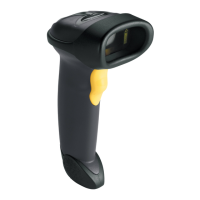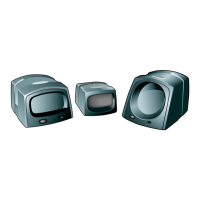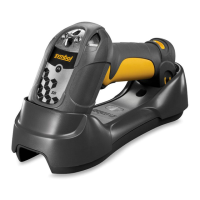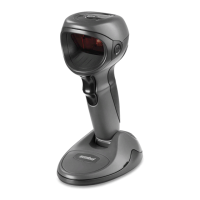What does it mean if Motorola Barcode Reader emits low/high/low beeps?
- JJohn JacobsSep 9, 2025
Normal when scanning the Code 39 Buffering Clear Buffer bar code or upon attempt to transmit an empty Code 39 buffer.
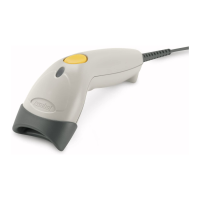
What does it mean if Motorola Barcode Reader emits low/high/low beeps?
Normal when scanning the Code 39 Buffering Clear Buffer bar code or upon attempt to transmit an empty Code 39 buffer.
What does it mean if Motorola Symbol LS1203 Barcode Reader emits high/high/high/low beeps?
Normal during host reset. Otherwise, set the scanner's RS-232 parity to match the host setting.
What to do if Motorola Barcode Reader laser comes on, but symbol does not decode?
If your Motorola Barcode Reader's laser is on but not decoding symbols, the issue might stem from a few reasons. First, the scanner might not be programmed to read the specific type of barcode you're scanning; refer to the Symbol LS1203 Product Reference Guide, p/n 72E-73953-xx, for more information. Second, the barcode itself could be damaged or unreadable, so check it for any damage or try scanning a different barcode. Finally, the distance between the scanner and the barcode could be incorrect; try moving the scanner closer to or further away from the barcode.
Why is Motorola Barcode Reader decoded symbol not transmitted to the host?
If your Motorola Barcode Reader decodes the symbol but doesn't transmit it to the host, it's likely that the scanner isn't programmed for the correct host type. To resolve this, scan the appropriate host type barcode.
| Brand | Motorola |
|---|---|
| Model | Symbol LS1203 |
| Category | Barcode Reader |
| Language | English |
Provides an overview of the scanner's capabilities and features.
Instructions for removing and inspecting the scanner from its packaging.
Steps to connect the scanner's interface cable to the host device.
Steps to disconnect the scanner's interface cable from the host.
Instructions for connecting an external power supply if required by the host.
Step-by-step guide to assemble the optional hands-free stand accessory.
Information on how to program the scanner using bar codes or software utilities.
Overview of beeper/LED definitions, scanning techniques, and decode zones.
Explains scanner beep codes and their meanings for status indication.
Explains the meaning of the scanner's LED indicator colors during operation.
Describes triggered and Auto-Scan modes for operating the scanner.
Provides guidance on how to aim the scanner for successful barcode decoding.
Decode zone chart detailing scan distances for the standard range model.
Decode zone chart detailing scan distances for the high density model.
Overview of maintenance, troubleshooting, technical specifications, and signal descriptions.
Instructions for cleaning and maintaining the scanner's exit window.
Lists common problems and their potential causes and solutions.
Details physical, performance, and environmental characteristics of the scanner.
Explains pin-outs for the scanner's interface cables (RS-232, Keyboard Wedge, USB).
Overview of programming scanner features and bar codes for customization.
Lists default settings for user-configurable scanner parameters.
Options to restore or set factory/custom default scanner settings.
Configuration options for beeper tone frequency and volume levels.
Settings for scanner power consumption modes and operation modes (triggered/auto-scan).
Parameters controlling scan line appearance and laser beam duration.
Options for audible feedback after scans and transmitting code ID characters.
Settings for prefixes, suffixes, and overall data transmission format.
Configuration for FN1 substitution and transmission of 'No Read' messages.
Describes setting up the scanner for Keyboard Wedge operation, translating data to keystrokes.
Step-by-step guide for physical connection of the scanner via Y-cable.
Lists default settings for Keyboard Wedge host parameters.
Selectable host types for Keyboard Wedge configuration.
Keyboard layout settings for different countries in USB HID Emulation.
Configuration for how the scanner handles unrecognized characters in Keyboard Wedge mode.
Options to adjust delay between emulated keystrokes for slower transmission.
Settings for Caps Lock behavior and data case conversion in Keyboard Wedge mode.
Options for mapping function keys and substituting FN1 characters in Keyboard Wedge mode.
Reference tables for keyboard layouts and ASCII character mappings for Keyboard Wedge.
Overview of connecting and setting up the scanner via RS-232 serial port.
Physical connection diagram and steps for direct RS-232 connection.
Lists default settings for RS-232 host parameters.
Terminal-specific RS-232 settings and code ID character assignments.
Selectable host types for RS-232 configuration.
Settings for Baud Rate, Parity, Stop Bits, and Data Bits for serial communication.
Options for hardware/software handshaking and receive error checking.
Configuration for scanner wait times for host responses (ACK, NAK, ENQ, CTS).
Settings for RTS line state and audible alerts for <BEL> characters.
Parameters for character transmission delay and Nixdorf mode indicators.
Configuration for how the scanner handles unrecognized characters in RS-232 mode.
Reference table for ASCII character mappings for RS-232 communication.
Overview of connecting and setting up the scanner via USB interface.
Physical connection diagram and compatible hosts/operating systems for USB.
Lists default settings for USB host parameters.
Options for selecting the USB device type, such as HID Keyboard Emulation.
Keyboard layout settings for USB HID Emulation for different countries.
Parameters for USB keystroke delay and Caps Lock override behavior.
Settings for unknown characters and keypad emulation over USB.
Options for FN1 substitution and function key mapping for USB HID devices.
Settings for converting data case and simulating Caps Lock state for USB.
Reference table for ASCII character mappings for USB communication.
Overview of symbology features and programming bar codes for scanner configuration.
Lists default settings for all symbology parameters supported by the scanner.
Settings for UPC-A, UPC-E, UPC-E1, EAN-13, EAN-8, and Bookland EAN.
Options for decoding and processing supplemental bar codes appended to primary ones.
Settings for Code 128, GS1-128, ISBT 128, and GS1 DataBar variants.
Settings for Code 39, Trioptic Code 39, Code 32, and related length/check digit parameters.
Settings for Code 93, Code 11, and Interleaved 2 of 5 symbologies and their lengths.
Settings for Discrete 2 of 5, Chinese 2 of 5, and Codabar symbologies and their lengths.
Settings for MSI symbology, check digits, and specific security levels for symbologies.
Options for scan security and tolerating barcode printing variations.
Overview of the 123Scan utility for scanner programming via PC.
Information on connecting the scanner to the host computer for 123Scan utility use.
Bar code to enable the 123Scan interface on the scanner for PC programming.
Comprehensive list of default settings for user preferences, interfaces, and symbologies.
Table mapping code characters to their corresponding symbology types.
Information on AIM code identifiers, code characters, and modifier characters for data transmission.
Example barcode representation for Code 39 symbology.
Example barcodes for UPC-A and EAN-13 symbologies.
Example barcodes for Code 128 and Interleaved 2 of 5 symbologies.
Example barcodes for various GS1 DataBar symbology variants.
Bar codes representing digits 0-9 for entering numeric values during scanner programming.
Bar code used to cancel selections or correct errors during scanner programming.
Mapping for Code 39 encoding to ASCII values and corresponding keystrokes.
Table mapping ALT key combinations to keystrokes.
Tables for miscellaneous and GUI key mappings and character sets.
Tables for PF and F key mappings and character sets.
Tables for numeric and extended keypad key mappings and character sets.
